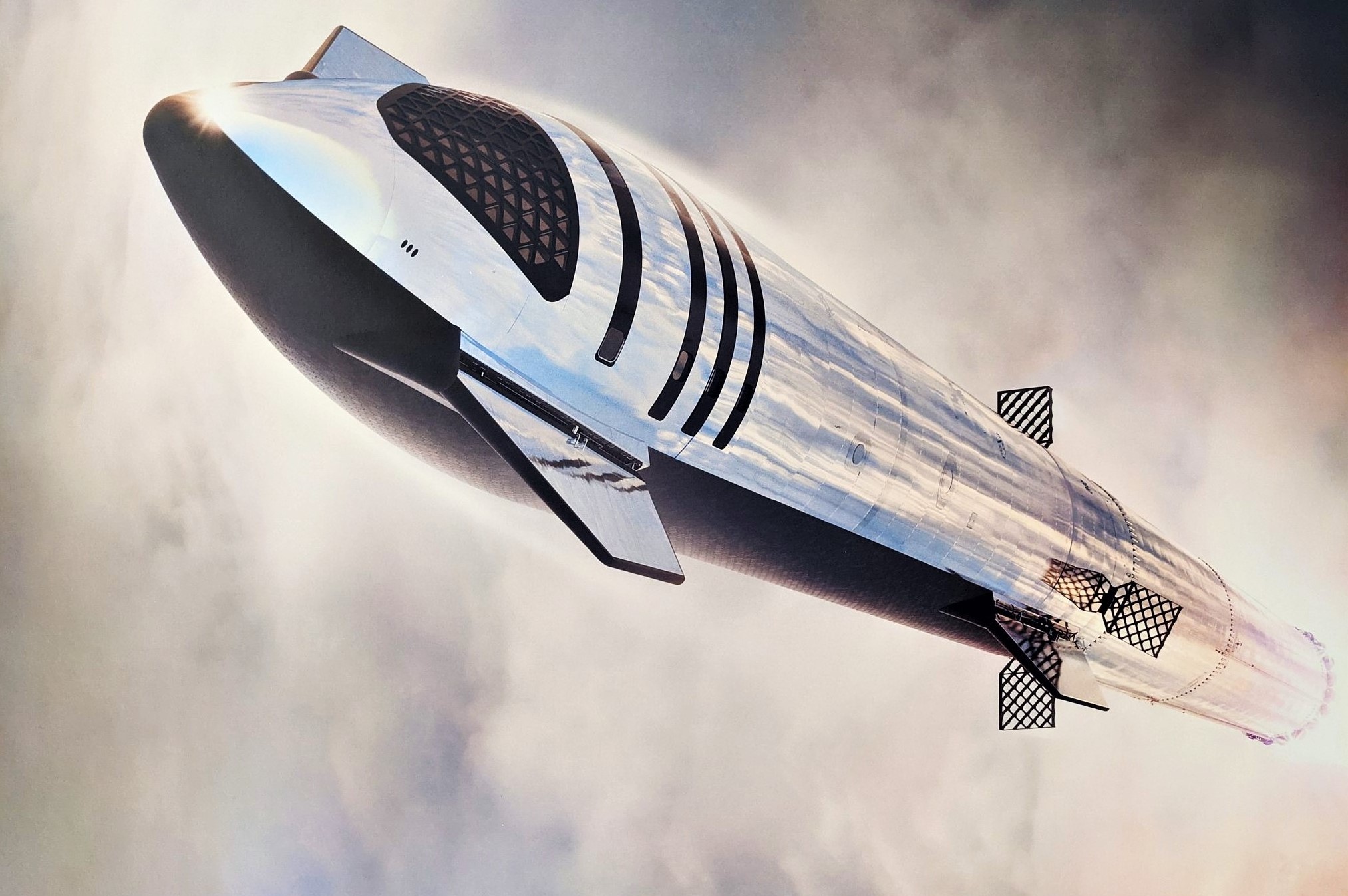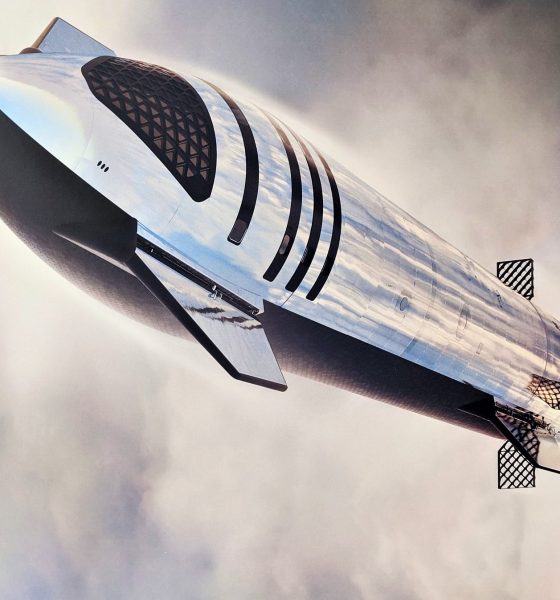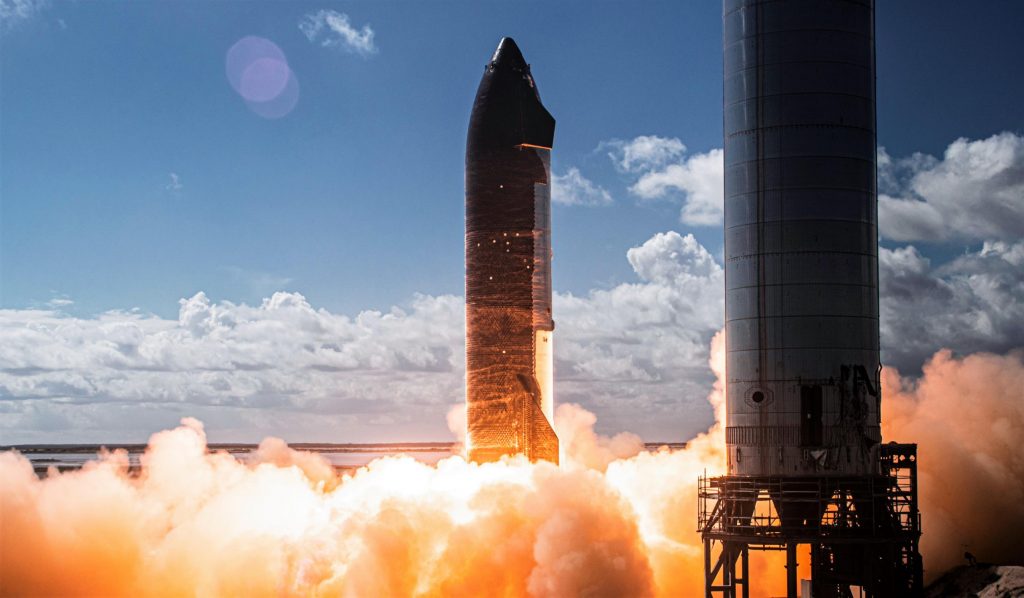

News
SpaceX CEO Elon Musk forecasts a dozen Starship launches next year
CEO Elon Musk has provided a small update on SpaceX’s next-generation Starship rocket in a brief statement to and Q&A with the board of the US National Academies of Science, Engineering, and Medicine.
While it’s now been more than two years since Musk last gave a proper presentation on the Starship program, a number of excellent questions from board members still managed to extract a handful of new details about the fully reusable rocket, which the SpaceX CEO says aims to “be a generalized transport mechanism for the [entire] solar system.” According to Musk, though, the most pressing near-term issues facing SpaceX are more down to Earth.
Reiterated several times in his comments to the National Academies, Musk says that the current limiting factor for Starship is securing regulatory approvals from the FAA for the rocket’s first orbital test flights, which SpaceX and Musk initially hoped would begin as early as mid-2021. Targets from July to November 2021 have since come and gone, while SpaceX has only begun to make concerted progress towards Starship’s first orbital launch in the last two or so months. Almost two months after its first rollout, Starship S20 – the first orbital-class prototype – began integrated testing, completing ambient and cryogenic proof tests in late September and its first Raptor preburner and static fire tests in the second half of October.
Most recently, after almost a month spent inactive at SpaceX’s Starbase test facilities, Starship S20 fired up all six of its Raptor engines – the first test of its kind and a major milestone for the program. Save for the completion of some relatively simple closeout tasks, Starship S20 is now more or less qualified for flight after its successful static fire. That leaves Super Heavy Booster 4 (B4) – the first stage meant to carry Ship 20 into space – up next on SpaceX’s South Texas testing docket after almost four agonizing months spent sitting, untested, at various Starbase facilities.
Musk says that SpaceX preparing to complete “a bunch of tests in December” with the implication that those tests likely include the first full Super Heavy wet dress rehearsal (WDR) with thousands of tons of live propellant and the first several booster static fire tests. Recently refitted with 29 Raptor engines for the third time in four months, it appears that SpaceX is finally close to finishing Super Heavy B4 to a point that will allow the booster to begin integrated testing. Through Super Heavy B3, which completed testing this summer, SpaceX thankfully already knows that the basic booster design is a structurally sound pressure vessel with plumbing and systems capable of surviving a three-Raptor static fire.

Still, that’s barely more than 10% of the total number of engines Super Heavy will need operational to send Starship to orbit. After months at the pad, SpaceX is finally closing out Booster 4’s aft section and installing a basic heat shield around its 29 Raptor engines, which will produce up to ~5400 metric tons (~12M lbf) of thrust at liftoff – more than any other rocket in history. Following Starship S20’s recent success, SpaceX has now fired six Raptors simultaneously and in close proximity without issue. However, Super Heavy B4 will have to fire 29 engines packed into roughly the same amount of space. No other liquid rocket stage in history has a more densely-packed thrust section, averaging at least 85 tons of thrust per square meter (~125 psi) of available engine space.
It’s thus likely that SpaceX will split Super Heavy B4’s first static fire campaign into several different parts, possibly involving seperate tests of the center cluster of nine Raptor Center (RC) engines and outer ring of 20 Raptor Boost (RB) engines before firing up all 29 together. Even if that testing is completed without issue on the first attempts, SpaceX will still likely want to perform a full wet dress rehearsal – and possibly even another 29-engine static fire – with Ship 20 installed on top of Booster 4.

Musk also believes that Starbase’s first orbital launch site will be complete as early as “later this month” – essential for full booster testing. Once all testing is complete, Musk says Starship, Super Heavy, and Starbase should be ready for their first orbital launch attempt as early as January or February 2022. Of course, that launch is entirely contingent upon FAA environmental approval and launch licensing, the former still incomplete and the latter unable to proceed until the former is complete. If the FAA reaches a favorable conclusion, meets its recently-announced target of December 31st to complete Starbase’s environmental review, and grants SpaceX a new launch license just days or a few weeks later, a January-February launch isn’t out of the question.
Looking further into 2022, Musk also revealed that he hopes SpaceX will complete “a dozen [Starship] launches” next year – incredibly ambitious by any measure. There isn’t a rocket in history that’s achieved double-digit launches in the same year as its debut. More importantly, even if the FAA environmental review SpaceX is in the middle of ends with the best possible outcome for Starship, it limits the company to either 3, 5, or 8 (it’s somewhat ambiguous) orbital launch attempts per year. Still, even a ‘mere’ three orbital Starship launch attempts in 2022 would be an incredible acheivement for SpaceX – let alone five, or Musk’s forecast of a dozen.

Elon Musk
Starlink passes 9 million active customers just weeks after hitting 8 million
The milestone highlights the accelerating growth of Starlink, which has now been adding over 20,000 new users per day.

SpaceX’s Starlink satellite internet service has continued its rapid global expansion, surpassing 9 million active customers just weeks after crossing the 8 million mark.
The milestone highlights the accelerating growth of Starlink, which has now been adding over 20,000 new users per day.
9 million customers
In a post on X, SpaceX stated that Starlink now serves over 9 million active users across 155 countries, territories, and markets. The company reached 8 million customers in early November, meaning it added roughly 1 million subscribers in under seven weeks, or about 21,275 new users on average per day.
“Starlink is connecting more than 9M active customers with high-speed internet across 155 countries, territories, and many other markets,” Starlink wrote in a post on its official X account. SpaceX President Gwynne Shotwell also celebrated the milestone on X. “A huge thank you to all of our customers and congrats to the Starlink team for such an incredible product,” she wrote.
That growth rate reflects both rising demand for broadband in underserved regions and Starlink’s expanding satellite constellation, which now includes more than 9,000 low-Earth-orbit satellites designed to deliver high-speed, low-latency internet worldwide.
Starlink’s momentum
Starlink’s momentum has been building up. SpaceX reported 4.6 million Starlink customers in December 2024, followed by 7 million by August 2025, and 8 million customers in November. Independent data also suggests Starlink usage is rising sharply, with Cloudflare reporting that global web traffic from Starlink users more than doubled in 2025, as noted in an Insider report.
Starlink’s momentum is increasingly tied to SpaceX’s broader financial outlook. Elon Musk has said the satellite network is “by far” the company’s largest revenue driver, and reports suggest SpaceX may be positioning itself for an initial public offering as soon as next year, with valuations estimated as high as $1.5 trillion. Musk has also suggested in the past that Starlink could have its own IPO in the future.
News
NVIDIA Director of Robotics: Tesla FSD v14 is the first AI to pass the “Physical Turing Test”
After testing FSD v14, Fan stated that his experience with FSD felt magical at first, but it soon started to feel like a routine.

NVIDIA Director of Robotics Jim Fan has praised Tesla’s Full Self-Driving (Supervised) v14 as the first AI to pass what he described as a “Physical Turing Test.”
After testing FSD v14, Fan stated that his experience with FSD felt magical at first, but it soon started to feel like a routine. And just like smartphones today, removing it now would “actively hurt.”
Jim Fan’s hands-on FSD v14 impressions
Fan, a leading researcher in embodied AI who is currently solving Physical AI at NVIDIA and spearheading the company’s Project GR00T initiative, noted that he actually was late to the Tesla game. He was, however, one of the first to try out FSD v14.
“I was very late to own a Tesla but among the earliest to try out FSD v14. It’s perhaps the first time I experience an AI that passes the Physical Turing Test: after a long day at work, you press a button, lay back, and couldn’t tell if a neural net or a human drove you home,” Fan wrote in a post on X.
Fan added: “Despite knowing exactly how robot learning works, I still find it magical watching the steering wheel turn by itself. First it feels surreal, next it becomes routine. Then, like the smartphone, taking it away actively hurts. This is how humanity gets rewired and glued to god-like technologies.”
The Physical Turing Test
The original Turing Test was conceived by Alan Turing in 1950, and it was aimed at determining if a machine could exhibit behavior that is equivalent to or indistinguishable from a human. By focusing on text-based conversations, the original Turing Test set a high bar for natural language processing and machine learning.
This test has been passed by today’s large language models. However, the capability to converse in a humanlike manner is a completely different challenge from performing real-world problem-solving or physical interactions. Thus, Fan introduced the Physical Turing Test, which challenges AI systems to demonstrate intelligence through physical actions.
Based on Fan’s comments, Tesla has demonstrated these intelligent physical actions with FSD v14. Elon Musk agreed with the NVIDIA executive, stating in a post on X that with FSD v14, “you can sense the sentience maturing.” Musk also praised Tesla AI, calling it the best “real-world AI” today.
News
Tesla AI team burns the Christmas midnight oil by releasing FSD v14.2.2.1
The update was released just a day after FSD v14.2.2 started rolling out to customers.

Tesla is burning the midnight oil this Christmas, with the Tesla AI team quietly rolling out Full Self-Driving (Supervised) v14.2.2.1 just a day after FSD v14.2.2 started rolling out to customers.
Tesla owner shares insights on FSD v14.2.2.1
Longtime Tesla owner and FSD tester @BLKMDL3 shared some insights following several drives with FSD v14.2.2.1 in rainy Los Angeles conditions with standing water and faded lane lines. He reported zero steering hesitation or stutter, confident lane changes, and maneuvers executed with precision that evoked the performance of Tesla’s driverless Robotaxis in Austin.
Parking performance impressed, with most spots nailed perfectly, including tight, sharp turns, in single attempts without shaky steering. One minor offset happened only due to another vehicle that was parked over the line, which FSD accommodated by a few extra inches. In rain that typically erases road markings, FSD visualized lanes and turn lines better than humans, positioning itself flawlessly when entering new streets as well.
“Took it up a dark, wet, and twisty canyon road up and down the hill tonight and it went very well as to be expected. Stayed centered in the lane, kept speed well and gives a confidence inspiring steering feel where it handles these curvy roads better than the majority of human drivers,” the Tesla owner wrote in a post on X.
Tesla’s FSD v14.2.2 update
Just a day before FSD v14.2.2.1’s release, Tesla rolled out FSD v14.2.2, which was focused on smoother real-world performance, better obstacle awareness, and precise end-of-trip routing. According to the update’s release notes, FSD v14.2.2 upgrades the vision encoder neural network with higher resolution features, enhancing detection of emergency vehicles, road obstacles, and human gestures.
New Arrival Options also allowed users to select preferred drop-off styles, such as Parking Lot, Street, Driveway, Parking Garage, or Curbside, with the navigation pin automatically adjusting to the ideal spot. Other refinements include pulling over for emergency vehicles, real-time vision-based detours for blocked roads, improved gate and debris handling, and Speed Profiles for customized driving styles.








